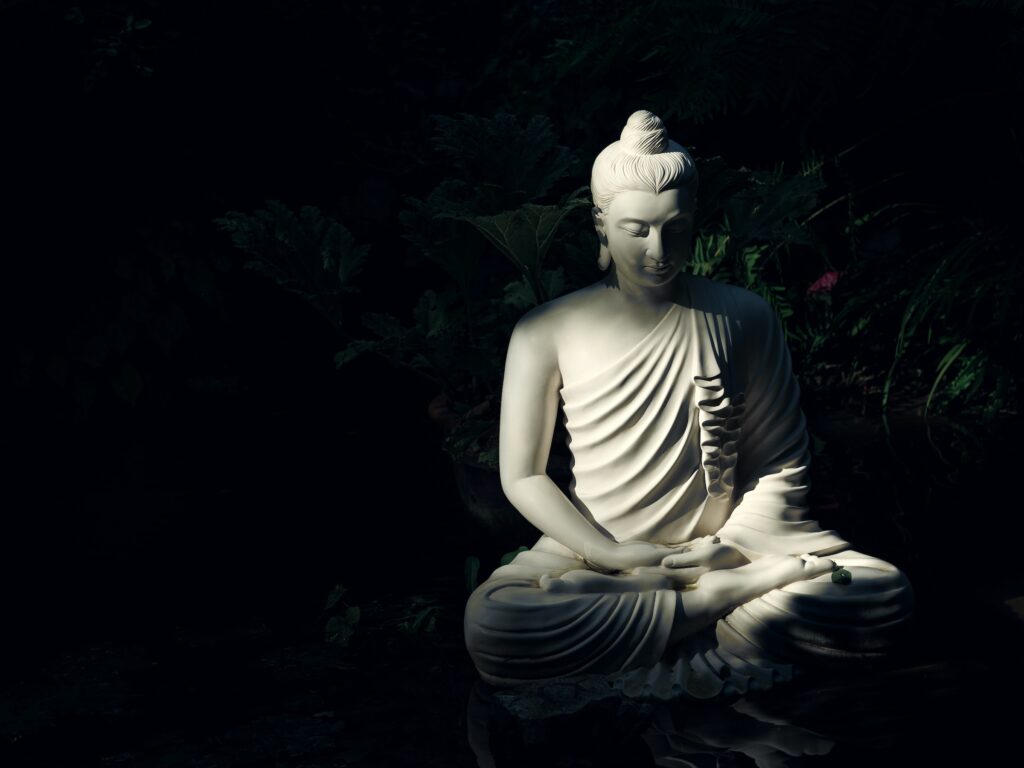Siddhartha’s Journey and Wisdom

“In the sacred pages of Siddhartha’s journey, each chapter reveals the profound tapestry of enlightenment— from princely seclusion to the boundless expanse of wisdom, a timeless guide through life’s labyrinth.” -Shree Shambav.
Top of Form
The Genesis of Siddhartha’s Quest
Siddhartha Gautama, the destined Buddha, began his journey amid the splendors of royalty in the 6th century BCE, within the confines of what is now Nepal. His early life unfolded in a palace adorned with opulence, shielded from the stark realities of the world. However, the echoes of suffering eventually reached the confines of his sheltered existence. An encounter with the aged, the sick, and the departed sparked an inner tumult, propelling Siddhartha into the labyrinth of existential inquiry.
The Pursuit of Enlightenment
The young prince, gripped by an unquenchable thirst for understanding, embarked on a pilgrimage of self-discovery. Renouncing his princely robes, Siddhartha wandered through the ascetic and contemplative realms, seeking the elusive answers to the profound questions that plagued his consciousness. The climactic moment transpired beneath the Bodhi tree, where Siddhartha, immersed in profound meditation, achieved enlightenment. It was here that he metamorphosed into the Buddha—the awakened one.
The Four Noble Truths and The Noble Eightfold Path
Central to Buddha’s teachings are the Four Noble Truths—a profound framework that encapsulates the essence of human suffering and the path to liberation. The first truth acknowledges the universal existence of suffering, the second pinpoints its roots in attachment and craving. The third offers a beacon of hope, proclaiming the possibility of cessation, and the fourth outlines the Noble Eightfold Path—an ethical roadmap encompassing right understanding, intention, speech, action, livelihood, effort, mindfulness, and concentration.
Teaching Approaches and Transformative Anecdotes
The Buddha, through his vast teachings, employed diverse approaches to convey profound insights. Parables and anecdotes, such as the poignant tale of Angulimala, the reformed murderer turned devoted disciple, exemplify the transformative power of the Buddha’s wisdom. His encounters with kings, ascetics, and commoners were characterized by a compassionate and egalitarian spirit, transcending societal boundaries to illuminate the path to enlightenment.
The Culmination of a Luminous Journey
The latter phase of Buddha’s life was dedicated to disseminating his teachings. He traveled extensively, spreading the Dharma—the cosmic law and order—across the Indian subcontinent. The Buddha’s interactions with disciples, the establishment of monastic communities, and the formation of a Sangha, or spiritual community, marked this period. The Buddha’s serene passing into Mahaparinirvana, the final liberation, serves as an epitome of the impermanence he so ardently preached.
In the intricate tapestry of Buddhism, Siddhartha Gautama’s life unfolds as a luminous epic—an odyssey from princely seclusion to the boundless expanse of enlightenment. His teachings, a timeless guide, navigate seekers through the labyrinth of existence, offering solace, wisdom, and the promise of liberation.

